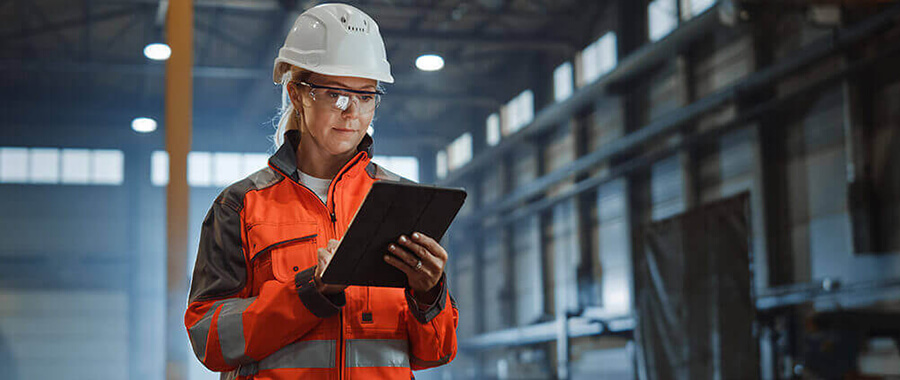Safety Audit as per MSIHC Rules 1989

Ergonomics Assessment
September 6, 2023
Legal EHS Requirements in India Consultancy by TheSafetyMaster
September 8, 2023Every workplace, regardless of its nature or scale, must prioritize the safety and well-being of its employees. However, ensuring a safe working environment requires more than just good intentions; it necessitates a comprehensive understanding of the potential hazards and risks associated with the specific industry or sector. This is where safety audits play a pivotal role. In this article, we will delve into the world of safety audits as per the MSIHC (Major Accident Hazards) Rules 1989 in order to provide you with an insightful guide on how to conduct effective safety audits.
Throughout this article, we will explore various aspects of safety audit procedures and regulations, equipping you with the knowledge and tools necessary to assess workplace hazards, implement suitable controls, and maintain compliance with MSIHC Rules 1989. Whether you are an employer seeking to improve your organization’s safety performance or an individual interested in promoting a culture of safety within your workplace, this article promises to provide invaluable insights that can be applied in practice.
Understanding the Importance of Safety Audits
When it comes to ensuring a safe and secure work environment, there is nothing more crucial than conducting regular safety audits. These audits serve as a critical tool in assessing and evaluating the effectiveness of safety measures implemented within an organization. They provide an opportunity to identify potential hazards, evaluate existing safety policies and procedures, and make necessary improvements to prevent accidents, injuries, or even fatalities.
Safety audits not only help organizations comply with regulatory standards such as the MSIHC Rules 1989 but also instill a culture of safety among employees. By actively engaging in safety audits, employers demonstrate their commitment towards prioritizing employee well-being. Moreover, these audits empower workers by encouraging their involvement in identifying potential risks and offering suggestions for improvement. Such collaboration fosters a sense of ownership and responsibility among employees, leading to increased morale and productivity.
The Basics of MSIHC Rules 1989
The MSIHC (Major Accident Hazard Control) Rules 1989 form the cornerstone of safety regulations in industries where major accident hazards are present. These rules were formulated by the Ministry of Environment, Forest and Climate Change, Government of India, with the aim of preventing and mitigating major accidents in hazardous installations.
Under these rules, hazardous installations are categorized into two types: Schedule 1 and Schedule 2. Schedule 1 covers industries dealing with hazardous substances such as petrochemicals, fertilizers, pharmaceuticals, and oil refineries. Schedule 2 includes industries like power plants, thermal power stations, nuclear power plants, and large chemical plants. The MSIHC Rules require all such industries to comply with specific safety standards to ensure the protection of life and property.
These rules outline crucial aspects such as hazard assessment, emergency planning measures, on-site emergency plans (OEP), safety audits, employee training programs related to safety management systems (SMS), risk management systems (RMS), process safety management (PSM), occupational health services (OHS), and more.
Step-by-Step Guide to Conducting a Safety Audit
Embarking on a safety audit can be a complex process, but by following a systematic approach, you can ensure comprehensive evaluation and improvement of workplace safety. This step-by-step guide will provide you with valuable insights and direction to conduct an effective safety audit as per the MSIHC (Major Accident Hazard Control) Rules 1989.
1. Establish the Purpose: Begin by clearly defining the objectives of your safety audit. Are you aiming to identify potential hazards, assess compliance with regulations, or enhance existing safety measures? Defining your purpose will help focus your efforts and ensure that all pertinent areas are adequately addressed.
2. Plan and Prepare: Develop a detailed plan outlining the scope, timeline, and resource requirements for your audit. Assign competent auditors who possess relevant knowledge and expertise in workplace safety. Gather necessary documentation such as prior inspection reports, accident records, standard operating procedures (SOPs), and existing risk assessments.
3. Conduct a Preliminary Review: Assess current policies, procedures, training programs, emergency response plans, and other relevant documents related to safety management within the organization. Identify any gaps or areas requiring immediate attention.
4. Site Visit and Inspection: Physically inspect the workplace site(s) to observe working conditions firsthand. Pay close attention to potential hazards such as unguarded machinery, slippery floors, inadequate ventilation systems, or improper storage of hazardous materials.
5. Employee Engagement: Engage with employees at all levels to gather insights on their understanding of safety protocols and their perceptions regarding workplace hazards. Conduct interviews or anonymous surveys to encourage open communication without fear
Setting the Foundation: Creating a Safety Audit Checklist
When it comes to conducting a safety audit, one of the most crucial steps is developing a comprehensive checklist. This serves as the foundation for evaluating and assessing the various elements of workplace safety in accordance with MSIHC Rules 1989. The checklist should be meticulously crafted, covering all essential aspects to ensure thorough scrutiny.
Begin by considering the specific requirements outlined in MSIHC Rules 1989. These rules lay down the guidelines and standards for safety in industries, focusing on hazard identification, risk assessment, and control measures. Your checklist should encompass these key areas and more, tailoring them to suit your organization’s unique needs. Remember that a well-crafted checklist is not just about compliance; it is about fostering proactive safety practices that contribute to a positive work environment.
Assessing Workplace Hazards and Identifying Risks
When conducting a safety audit as per MSIHC Rules 1989, assessing workplace hazards and identifying risks is a critical step towards ensuring the well-being of employees. This phase involves a comprehensive examination of the work environment to identify potential threats that could compromise safety.
During the assessment, all aspects of the workplace are thoroughly inspected to uncover any hazards that may exist. These hazards could range from physical dangers such as slippery floors or faulty machinery, to chemical risks like exposure to harmful substances. The inspection also includes evaluating ergonomic factors such as improper workstation setup or repetitive motions that may lead to musculoskeletal disorders.
This process requires meticulous attention to detail and an analytical mindset. By enlisting the help of trained professionals who possess a keen eye for potential risks, organizations can proactively eliminate or mitigate hazards before they escalate into accidents or injuries.
Developing Effective Safety Policies and Procedures
When it comes to creating a safe work environment, developing effective safety policies and procedures is paramount. These guidelines not only outline the expectations for employees but also provide a framework for ensuring compliance with the MSIHC Rules 1989. By establishing clear policies and procedures, organizations can systematically address potential hazards, minimize risks, and promote a culture of safety.
To begin this process, it is crucial to conduct a comprehensive analysis of the workplace to identify specific hazards that may exist. This analysis should involve evaluating each task performed within the organization and determining potential risks associated with them. Once hazards are identified, appropriate safety policies can be formulated to mitigate those risks.
Furthermore, when developing safety policies and procedures, it is essential to involve employees at all levels of the organization. Seeking their input not only fosters a sense of ownership but also enhances their commitment to following the established guidelines. By involving employees in this process, organizations tap into their valuable knowledge and experience on the ground level. This collaborative approach ensures that safety policies are practical, feasible, and tailored to the unique needs of the workplace.
Ensuring Compliance with MSIHC Rules 1989
In order to ensure compliance with the stringent regulations outlined in the MSIHC (Major Accident Hazard Control) Rules of 1989, organizations must adopt a proactive and comprehensive approach. The rules aim to prevent major accidents and protect both employees and the environment. To achieve compliance, companies should begin by conducting a thorough review of their existing practices, policies, and procedures.
During this review process, it is crucial to assess whether all relevant aspects of the MSIHC Rules are being addressed effectively. This includes evaluating the organization’s risk management strategies, emergency preparedness measures, safety training protocols, and monitoring systems. By embracing a holistic approach towards compliance, companies can not only meet regulatory requirements but also foster a culture of safety that promotes employee well-being and organizational success.
Training and Educating Employees on Safety Practices
In order to create a safe and secure work environment, it is crucial to prioritize the training and education of employees on safety practices. By equipping them with the necessary knowledge and skills, they can actively contribute to maintaining a hazard-free workplace. The training programs should cover various aspects, including but not limited to:
1. Basic Safety Awareness: Conduct introductory sessions that instill a sense of awareness among employees regarding potential hazards in the workplace. This should include understanding common risks associated with their specific roles or areas of work.
2. Hazard Identification: Train employees to identify potential hazards and take appropriate preventive measures. Encourage them to report any unsafe conditions promptly so that corrective actions can be taken swiftly.
3. Emergency Response: Equip employees with essential first aid skills and emergency response procedures. Conduct mock drills regularly to ensure preparedness during critical situations.
4. Proper Equipment Usage: Provide thorough training on how to safely operate machinery, tools, and equipment required for their tasks. Emphasize the importance of proper usage techniques and maintenance protocols.
5. Safety Policies and Procedures: Familiarize employees with the safety policies outlined by MSIHC Rules 1989, ensuring they understand their rights, responsibilities, and obligations towards maintaining a safe working environment.
A well-trained workforce not only enhances overall safety but also boosts employee morale, creating an atmosphere where individuals feel empowered to actively contribute towards maintaining a secure workplace for themselves as well as their colleagues.
Implementing Safety Measures and Controls
Once you have identified workplace hazards and assessed associated risks, it is crucial to implement effective safety measures and controls to mitigate those risks. This step is vital in ensuring the well-being of your employees and maintaining compliance with the MSIHC Rules 1989.
One impactful way to implement safety measures is by introducing engineering controls. These involve modifying the work environment or equipment to eliminate or reduce hazards. For example, installing guardrails on elevated platforms or implementing automated systems can help minimize the risk of falls or accidents caused by human error.
In addition to engineering controls, administrative controls play a significant role in enhancing workplace safety. These include developing strict safety policies and procedures, conducting regular safety training sessions, and implementing effective communication channels for reporting potential hazards. By fostering a culture of safety within your organization, you empower employees to take responsibility for their own well-being and actively participate in maintaining a safe working environment.
Evaluating and Improving Safety Performance
Once the safety audit has been conducted and all the necessary data has been gathered, it is crucial to evaluate the findings and take proactive measures to improve safety performance within the organization. Evaluating safety performance involves analyzing the collected information, identifying areas of improvement, and implementing targeted strategies to enhance overall safety standards.
During the evaluation process, it is essential to assess both leading and lagging indicators of safety performance. Leading indicators focus on proactive measures implemented to prevent accidents before they occur. This includes initiatives such as regular training programs, hazard identification processes, and participation in safety committees. On the other hand, lagging indicators measure past incidents or near misses that have already occurred within a given timeframe.
To improve safety performance effectively, organizations should prioritize both leading and lagging indicators. By addressing leading indicators through continuous training programs that empower employees with relevant knowledge and skills, organizations can create a strong foundation for accident prevention. Additionally, implementing robust reporting systems for near-miss incidents can provide valuable insights into potential hazards that require immediate attention.
Conclusion
In conclusion, conducting safety audits as per the MSIHC Rules 1989 is an essential practice for organizations aiming to ensure the well-being of their employees and adhere to regulatory requirements. By following the step-by-step guide outlined in this article, businesses can create a safe working environment, mitigate hazards, and minimize the risk of accidents or incidents. While the process may seem daunting at first, it ultimately leads to increased productivity, employee satisfaction, and overall organizational success. Remember that safety is not just a legal obligation but also a moral responsibility; let us work together to create workplaces that prioritize the health and safety of all individuals involved.
With Best Wishes
Sanjeev Paruthi
TSM TheSafetyMaster® Private Limited
Unit No 221-451-452, SPL1/J, 2nd & 4th Floor, Sunsquare Plaza Complex, RIICO Chowk, Bhiwadi 301019, Rajasthan, India
Phone: +91 1493 22 0093
Mobile: +91 7665231743/9413882016
Email: info@thesafetymaster.com




